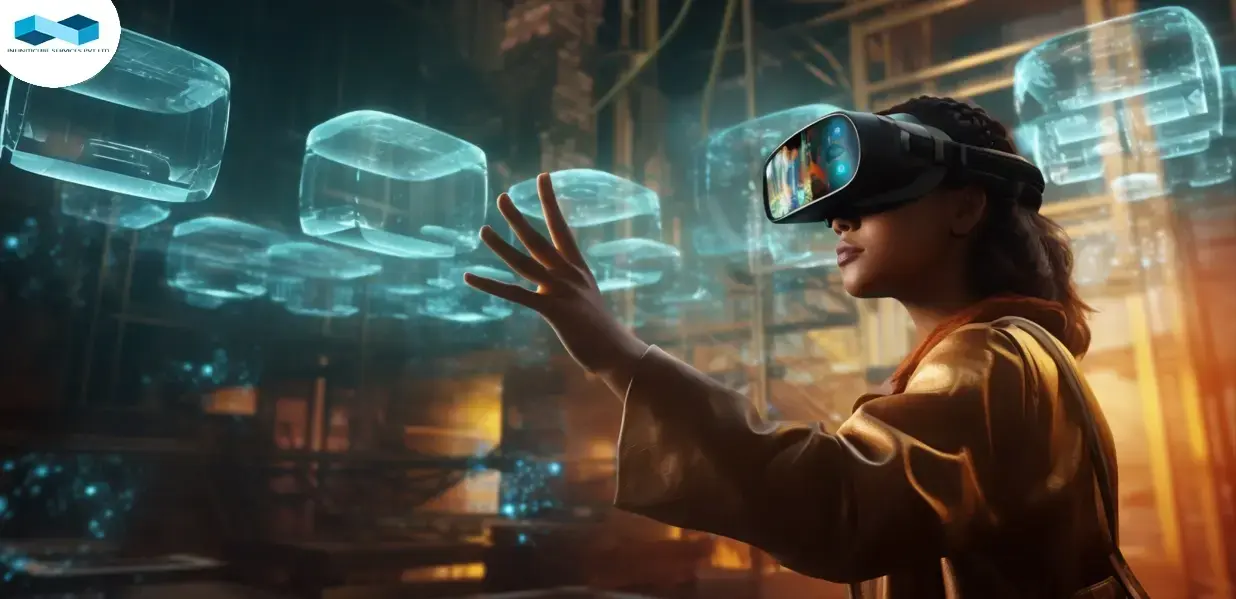


Technological advancements are rapidly shaping society, impacting industries and norms. Disruptive technologies redefine markets and drive growth. Anticipating future disruptions is crucial for seizing opportunities and mitigating risks in the digital age.
Artificial Intelligence (AI) is a transformative technology across industries, enhancing daily life with convenience. AI ranges from narrow to general intelligence, with applications in healthcare, finance, and transportation.
Its evolution poses technical and ethical challenges, driving innovation and efficiency gains. AI's impact on industries reshapes business models and decision-making processes, paving the way for safer and more sustainable solutions. Understanding AI's nuances can lead to positive change and shape a more intelligent future.
Artificial Intelligence (AI) is transforming industries like healthcare, finance, and transportation significantly.
The Internet of Things (IoT) is reshaping industries worldwide by connecting devices to automate processes and improve user experiences. IoT applications in smart cities enhance urban infrastructure, transportation, energy efficiency, and public safety.
Challenges include interoperability, data management, and security concerns such as cyberattacks and privacy violations. Addressing these challenges is crucial for realizing the full potential of IoT in creating a resilient and secure ecosystem for the future.
Blockchain technology revolutionizes data management and security through decentralization, cryptography, and immutable ledgers. Cryptocurrencies, like Bitcoin, utilize blockchain for peer-to-peer transactions, eliminating intermediaries.
Industries explore blockchain for transparency, traceability, and security in supply chains, healthcare, real estate, and voting. Blockchain ensures authenticity, privacy, and efficiency in transactions through smart contracts and secure record-keeping.
Voting systems benefit from blockchain's security and transparency, enhancing trust and participation in democratic processes. Blockchain's potential to reshape industries and empower individuals signifies a paradigm shift in the digital era, promising endless possibilities for innovation and transformation.
Quantum computing is a significant advancement promising to revolutionize problem-solving and information processing. It harnesses quantum mechanics, enabling computations at incredible speeds and scales, surpassing classical computers.
It utilizes qubits in superposition states, allowing for parallel computations and solving complex problems exponentially faster. Quantum computers have vast potential applications, including cryptography, drug discovery, materials science, supply chain optimization, and financial modeling.
Overcoming challenges such as decoherence, hardware scalability, and algorithm development is crucial for realizing quantum computing's full potential.
Augmented Reality (AR) and Virtual Reality (VR) are immersive technologies that enhance digital interaction and reality perception. AR overlays virtual content in the real world, while VR immerses users in simulated environments.
AR applications range from gaming to healthcare, while VR is used in training and therapy. Industries like retail, architecture, and healthcare utilize AR and VR for customer engagement, design, and medical training.
Challenges include hardware limitations and content creation costs, but ongoing advancements aim to make AR and VR more accessible and immersive. Despite challenges, AR and VR technologies are reshaping human-computer interaction and immersive experiences across industries.
The impact of 5G technology on connectivity, industries, and society. 5G offers faster speeds, lower latency, and reliability. It operates on higher frequency bands and utilizes advanced antenna technologies, network slicing, and edge computing. 5G enables remote patient monitoring, connected vehicles, smart factories, and IoT solutions.
It drives innovation, economic growth, and societal transformation, bridging the digital divide. However, concerns arise over privacy, security, and environmental impact. The deployment must consider these issues for the safe and equitable realization of 5G benefits.
Biotechnology and genetic engineering have vast potential in healthcare, agriculture, and industry. Biotechnology applies biological principles to improve lives through products and processes in various fields like healthcare, agriculture, and industry.
It uses living organisms to solve complex issues, including developing new therapies and genetically modifying crops. Genetic engineering involves modifying organisms' DNA to achieve specific goals, such as introducing new traits or modifying existing ones. Techniques range from selective breeding to modern tools like CRISPR-Cas9 for precise DNA modification.
While offering benefits like personalized medicine and sustainable agriculture, ethical concerns include potential misuse and long-term effects of genetically modified crops. The field is expected to grow with advancements in genomics and bioinformatics, requiring careful consideration of ethical, social, and environmental implications.
Renewable energy technologies offer sustainable solutions in solar power, wind energy, and biomass utilization for a greener future. Solar power captures sunlight through photovoltaic cells, advancing efficiency and affordability in various applications. Wind energy converts moving air into electricity through turbines, with global growth driven by scalability and environmental benefits.
Biomass and bioenergy technologies transform organic matter into heat, electricity, and biofuels, reducing waste and emissions while diversifying energy sources. These innovations promise to combat climate change and enhance energy security by transitioning to cleaner alternatives and reducing reliance on fossil fuels.
Disruptive technologies intersect, driving innovation and transformation. Embrace change, and prepare for the future through education, innovation, and adaptability. Exciting journey ahead as we harness innovation to address global challenges and unlock human potential.
Free Consultation: Unlock the Potential of Disruptive Technologies in Your Business - we Offer a free consultation where our experts discuss practical strategies for implementing disruptive technologies effectively and maximizing their benefits for your business growth.

He is working with infiniticube as a Digital Marketing Specialist. He has over 3 years of experience in Digital Marketing. He worked on multiple challenging assignments.
Our newsletter is finely tuned to your interests, offering insights into AI-powered solutions, blockchain advancements, and more.
Subscribe now to stay informed and at the forefront of industry developments.